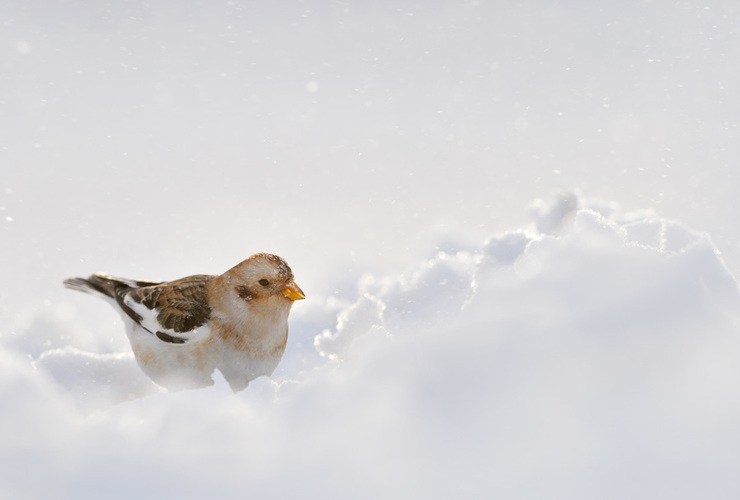Field Notes: Winter residents and arrivals
Isaac Johnston, our Glenridding Common Conservation Officer, shares his top three winter birds plus tips on how to spot them

As winter rolls in across the country many birds retreat to the lowlands or warmer climes, but a handful of hardy species thrive in our freezing and hostile uplands. In landscapes often locked in ice and snow for months on end, it takes some character to spend your winter in the country’s most challenging landscapes!
Starting off with the ubiquitous raven (Corvus Corax), this large witty corvid is often a partner to a fell walker during the winter months. Soaring effortlessly in the swirling winter wind the raven can be identified by its large wingspan, diamond or wedge shaped tail and croaking call.
Next there is the fieldfare (Turdus Pilaris). The fieldfare is a relative of the blackbird and having spent their summer in Eastern Europe, chooses to winter in the milder climate of Western Europe including Britain. Eating fruits and berries from trees like hawthorn and juniper, fieldfares can regularly be seen in our montane landscapes. A large member of the thrush family with a grey head and rump, brown wings and specked belly.
Arguably the greatest mountain species of the three is the snow bunting (Plectrophenax Nivalis). This large member of the bunting family is perfectly adapted to life on the high fells and along our wildest coastlines. Feeding mainly on seeds and insects these little white, brown and black birds can be seen on the summit plateau of Helvellyn as well as at several other John Muir Trust properties.
Just 60 pairs breed in the UK and all of these do so in the Cairngorms and at Ben Nevis.
Find out more about our work at Glenridding Common.
Photo: Snow bunting ©Fergus Gill/2020VISION

